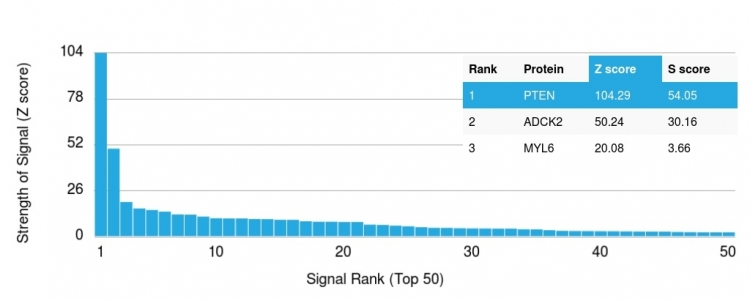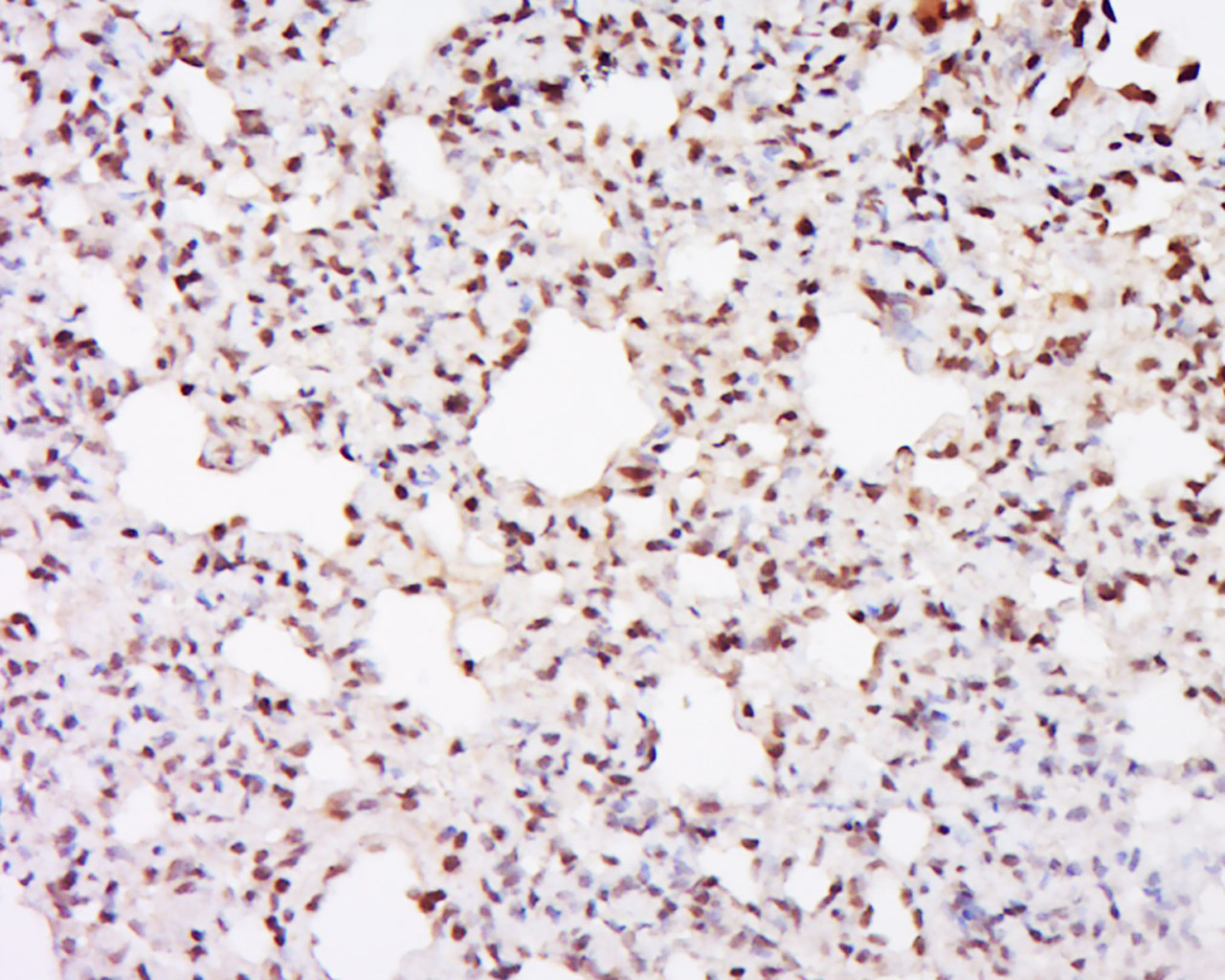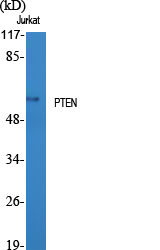![IHC-P analysis of human prostate carcinoma tissue using GTX17980 PTEN antibody [PTEN/2110]. IHC-P analysis of human prostate carcinoma tissue using GTX17980 PTEN antibody [PTEN/2110].](https://www.genetex.com/upload/website/prouct_img/normal/GTX17980/GTX17980_20200115_IHC-P_1052_w_23060620_784.webp)
IHC-P analysis of human prostate carcinoma tissue using GTX17980 PTEN antibody [PTEN/2110].
PTEN antibody [PTEN/2110]
GTX17980
ApplicationsImmunoHistoChemistry, ImmunoHistoChemistry Paraffin, Other Application
Product group Antibodies
ReactivityHuman
TargetPTEN
Overview
- SupplierGeneTex
- Product NamePTEN antibody [PTEN/2110]
- Delivery Days Customer9
- Application Supplier NoteIHC-P: 1-2microg/ml for 30 minutes at RT. *Optimal dilutions/concentrations should be determined by the researcher.Not tested in other applications.
- ApplicationsImmunoHistoChemistry, ImmunoHistoChemistry Paraffin, Other Application
- CertificationResearch Use Only
- ClonalityMonoclonal
- Clone IDPTEN/2110
- Concentration0.2 mg/ml
- ConjugateUnconjugated
- Gene ID5728
- Target namePTEN
- Target descriptionphosphatase and tensin homolog
- Target synonyms10q23del, BZS, CWS1, DEC, GLM2, MHAM, MMAC1, PTEN1, PTENbeta, PTENgama, TEP1, phosphatidylinositol 3,4,5-trisphosphate 3-phosphatase and dual-specificity protein phosphatase PTEN, MMAC1 phosphatase and tensin homolog deleted on chromosome 10, PTEN variant PTEN-K267Rfs*9, PTEN variant PTEN-L247*, PTEN variant PTEN-R234Afs*11, PTENepsilon, inositol polyphosphate 3-phosphatase, mitochondrial PTENalpha, mitochondrial phosphatase and tensin protein alpha, mutated in multiple advanced cancers 1, phosphatase and tensin-like protein, phosphatidylinositol-3,4,5-trisphosphate 3-phosphatase and dual-specificity protein phosphatase PTEN, protein tyrosine phosphatase
- HostMouse
- IsotypeIgG2b
- Protein IDP60484
- Protein NamePhosphatidylinositol 3,4,5-trisphosphate 3-phosphatase and dual-specificity protein phosphatase PTEN
- Scientific DescriptionThis gene was identified as a tumor suppressor that is mutated in a large number of cancers at high frequency. The protein encoded by this gene is a phosphatidylinositol-3,4,5-trisphosphate 3-phosphatase. It contains a tensin like domain as well as a catalytic domain similar to that of the dual specificity protein tyrosine phosphatases. Unlike most of the protein tyrosine phosphatases, this protein preferentially dephosphorylates phosphoinositide substrates. It negatively regulates intracellular levels of phosphatidylinositol-3,4,5-trisphosphate in cells and functions as a tumor suppressor by negatively regulating AKT/PKB signaling pathway. The use of a non-canonical (CUG) upstream initiation site produces a longer isoform that initiates translation with a leucine, and is thought to be preferentially associated with the mitochondrial inner membrane. This longer isoform may help regulate energy metabolism in the mitochondria. A pseudogene of this gene is found on chromosome 9. Alternative splicing and the use of multiple translation start codons results in multiple transcript variants encoding different isoforms. [provided by RefSeq, Feb 2015]
- ReactivityHuman
- Storage Instruction-20°C or -80°C,2°C to 8°C
- UNSPSC12352203

![IHC-P analysis of human renal cell carcinoma tissue using GTX17980 PTEN antibody [PTEN/2110]. IHC-P analysis of human renal cell carcinoma tissue using GTX17980 PTEN antibody [PTEN/2110].](https://www.genetex.com/upload/website/prouct_img/normal/GTX17980/GTX17980_20200115_IHC-P_1085_w_23060620_102.webp)






![FACS analysis of HeLa cells using GTX83304 PTEN antibody [1B8]. Right : PTEN Left : negative control](https://www.genetex.com/upload/website/prouct_img/normal/GTX83304/GTX83304_20170912_FACS_w_23061322_530.webp)